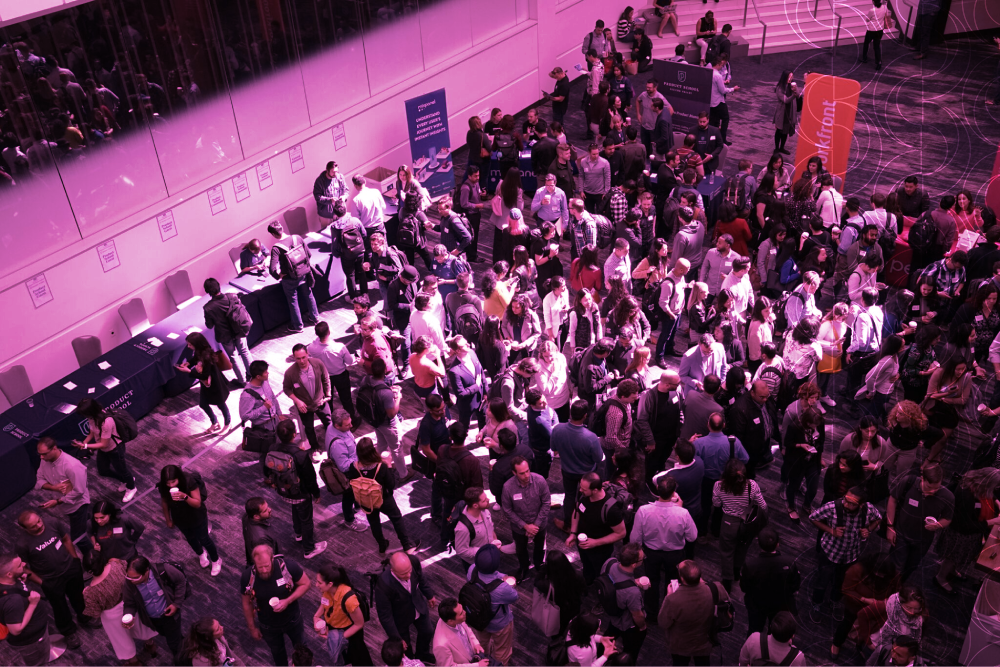The Vanishing Act: Why B2B Event Attendance is Dwindling and What We Can Do About It
As a marketing manager with over 30 years of experience in B2B marketing, I’ve witnessed firsthand the evolving landscape of professional events. Recently, a troubling trend has emerged: physical events are becoming increasingly challenging to fill, with attendance rates plummeting. This phenomenon isn’t just a post-COVID issue; it’s a shift in professional behaviour that’s been brewing for years. Let’s dive into the complexities of this issue and explore potential solutions.
The Herculean Task of Event Planning
First, let’s acknowledge the immense effort that goes into organizing any event. The process is akin to planning an elaborate wedding, with countless moving parts:
- Conceptualization and strategy
- Identifying and targeting the right audience
- Developing compelling agendas and securing speakers or entertainment
- Venue selection and booking
- Complex marketing campaigns (emails, landing pages, telemarketing, social media)
- Logistical planning (catering, branding, merchandise)
- Event execution and hosting
- Post-event follow-up and analysis
This process is equally intense whether you’re organizing:
- An intimate lunch event with pre-booked personal menu choices
- A larger event with anticipated attendance in the hundreds
- A trade event showcasing new products, solutions, or ideas
- A training or enablement workshop to help attendees learn new skills or grow their business
- An exclusive invitation to a roundtable dinner at a prestigious venue where the cost per head is in the hundreds
- A hospitality event featuring performance car driving, sports events, golf or sailing
Each type of event, regardless of size or format, requires the same meticulous planning, execution and often substantial costs.
The Ghosting Epidemic
Despite all this effort, we’re seeing a disturbing trend: confirmed attendees simply not showing up. Current attendance rates are falling below 50% of registrations, even with multiple reminders and easy cancellation options. This “ghosting” behaviour has severe consequences:
- Wasted resources (food & drink, venue space, merchandise)
- Decreased ROI on marketing efforts
- Disappointment for speakers, organisers and attending participants
- Potential damage to business relationships
For example, when organizing a dinner roundtable at a prestigious venue where the cost per head is several hundred pounds, no-shows represent a significant financial loss. Similarly, for hospitality events like performance car driving experiences, golf or sailing, the costs and logistical challenges of last-minute cancellations are substantial.
The Turning Point: Beyond COVID
While it’s tempting to blame the COVID-19 pandemic for this shift, the truth is more complex. The pandemic accelerated existing trends towards remote working and digital interactions, but the roots of this issue go deeper. As someone who’s been in the industry for decades, I can attest that this behaviour, though not as prevalent, existed even before COVID drove people to more remote working and striving for a better work-life balance.
The Big Questions
As event organizers and marketers, we need to ask ourselves some tough questions:
1. What do modern business professionals truly value in face-to-face events?
2. Why has it become socially acceptable to RSVP and then not attend?
3. How can we adapt our event strategies to this new reality?
4. Is there a way to recapture the magic of in-person networking and idea exchange?
5. What types of events are still drawing consistent attendance, and why?
Potential Solutions and Future Directions
- Hybrid Events: Offering both in-person and virtual attendance options.
- Smaller, More Targeted Events: Focused on quality over quantity in attendance.
- Unique Experiences: Events that can’t be easily replicated, bucket-list type events that would be difficult to arrange yourself.
- Flexible Scheduling: Accommodating the changing work-life balance priorities.
- Community Building: Fostering year-round engagement beyond single events.
- Personalization: Tailored event content and experiences to individual attendees.
- Accountability Measures: Implementing (gentle) consequences for no-shows, especially for high-cost events like prestigious dinner roundtables.
A Call to Action
The future of B2B events is at a crossroads. We need your insights:
- As an event organizer, what strategies have you found effective in boosting attendance?
- As an attendee, what factors influence your decision to attend an event? Is it the promise of new product information, networking opportunities, or unique experiences?
- How can we collectively rebuild the culture of professional engagement and networking?
- What would make you prioritize attending a physical event over a virtual one?
Share your thoughts and experiences in the comments below. Have you noticed similar trends in your industry? What types of events are you still eager to attend in person?
Let’s not let the art of face-to-face connection become a relic of the past. With creativity, adaptability, and a commitment to value, we can revitalize the B2B event space for the modern era. Whether it’s a product showcase, a skills training seminar, or an exclusive roundtable discussion, there’s still immense value in coming together. But we need to evolve our approach to match the changing needs and expectations of our audience.
Your experiences and ideas are crucial in shaping the future of B2B events. Let’s work together to ensure that the time, effort, and resources we invest in these events continue to yield meaningful returns for all involved.




